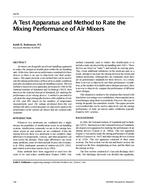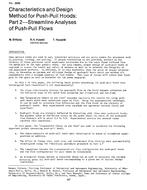Desiccant-based dehumidification technologies offer thepotential to provide improved IAQ in schools by properlycontrolling space humidity levels while also providing the 15cfm (7 L/s) of ventilation air per student required by ASHRAEStandard 62. This paper reports field test results from a schoolnear Kansas City, Kansas, that was retrofitted with a desiccantsystem. Monitoring equipment was installed to monitor energyuse and space conditions in the desiccant-treated classroomsas well as two other similar areas that used conventional HVACequipment. Measured space humidity levels were shown to be15 to 20 gr/lb (2 to 3 g/kg) lower in the desiccant area than inother areas with the same ventilation rates. Classroom areasthat provided only 5 cfm (2.3 L/s) of ventilation air per studentwere found to maintain acceptable humidity levels in the space.However, areas that used conventional HVAC equipment toprovide 15 cfm (7 L/s) per person were shown to have muchhigher humidity levels. All studied areas, including the desiccant-treated area, had unacceptably high humidity levelsduring the unoccupied periods (nights, weekends, and summerbreak). In order to provide good IAQ in classrooms, humiditycontrol must be provided continuously to minimize the risk ofbiological contamination. The desiccant unit installed in thistest was configured as a ventilation pretreatment system, sodehumidification could not be provided independently of ventilation.For desiccant technology to realize its full potential inschools, packaged systems must be configured and applied toallow for dehumidification during both occupied and unoccupiedperiods.
Units: Dual
Citation: Symposium, ASHRAE Transactions, vol. 108, pt. 2
Product Details
- Published:
- 2002
- Number of Pages:
- 10
- File Size:
- 1 file , 1.1 MB
- Product Code(s):
- D-9035


